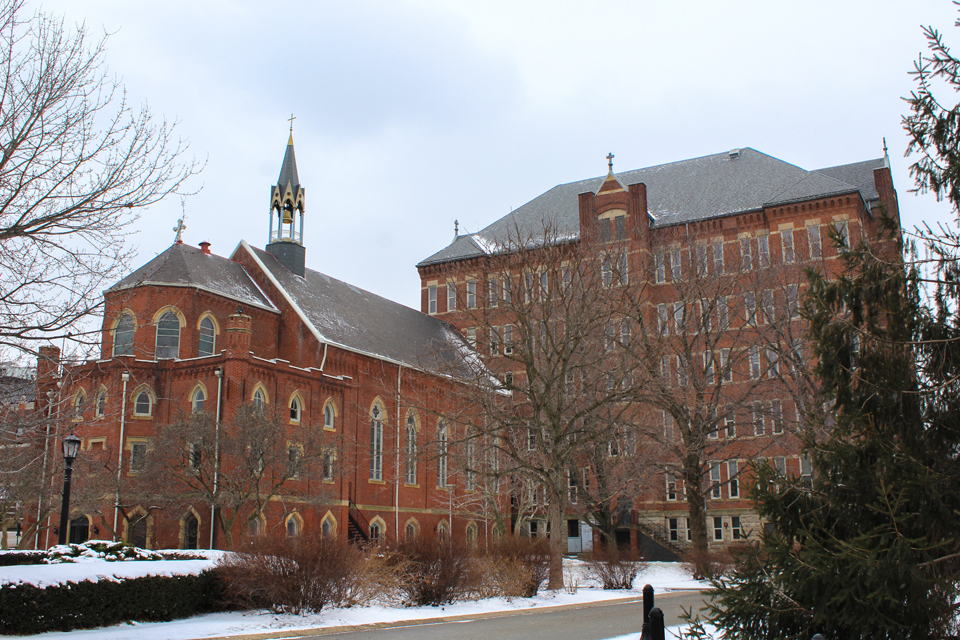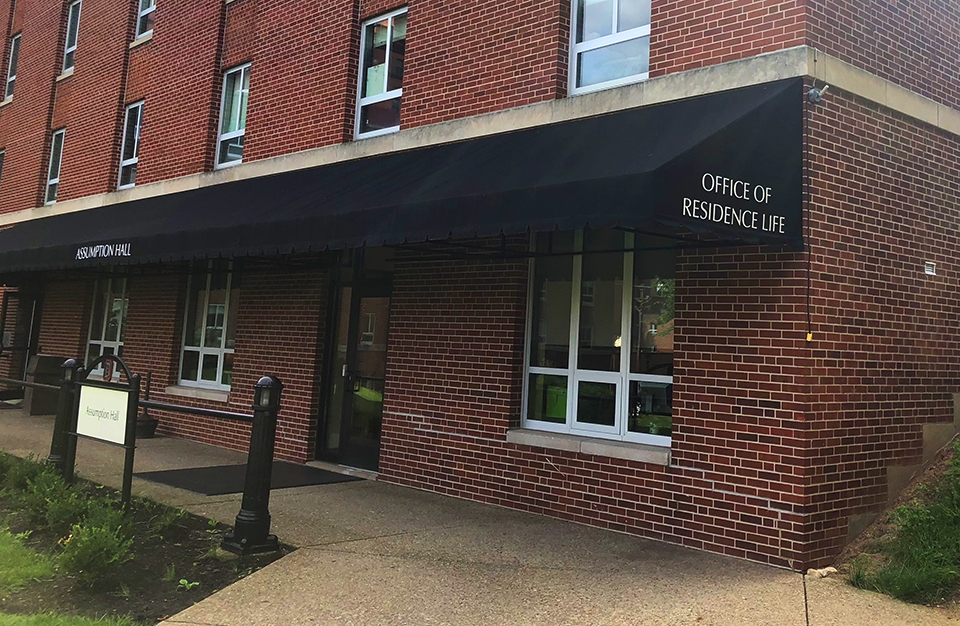

Duquesne’s administration building houses the university’s Management and Business division. Duquesne recently received an upgrade in its credit rating from Standard and Poor’s, which shows that the university has strong financial health.
By Brandon Addeo | Asst. News Editor
Financial services company Standard and Poor’s recently upgraded Duquesne University’s credit rating from an “A-” to an “A,” indicating that the university is doing well financially.
Standard and Poor’s based Duquesne’s rating on the university’s budget surpluses, stable enrollment and ability to pay back debt.
“We … assessed Duquesne’s financial profile as strong, with solid operating performance, growing net tuition revenues, improved financial resources and below average debt burden,” Luke Gildner of Standard and Poor’s told the Duquesne University Times. “Combined, we believe these credit factors lead to an indicative standalone credit profile of ‘a’ and issue rating of ‘A.’”
Last week, the university announced a campus-wide five percent budget cut. Duquesne spokeswoman Bridget Fare said budget trimming is one of the tactics the university uses to maintain its financial health.
“It is prudent to maintain a positive surplus so that we can continue to invest in our facilities and physical campus,” Fare said. “Duquesne’s willingness to make proactive fiscal management decisions such as trimming budgets when necessary positively impacted the [credit] rating.”
Duquesne is catching up with its collegiate peers in Pittsburgh: In 2013, Carnegie Mellon University was rated “AA-”, and the University of Pittsburgh is currently rated “AA+.” Standard and Poor’s credit rating scale ranges from “D” to “AAA,” with an “A” rating being the fifth-highest rating.
Duquesne’s rating upgrade will benefit the university as a whole, according to Duquesne economics professor Risa Kumazawa.
The university can expect to see an increase in “donor confidence,” or the likelihood a donor will want to give money to Duquesne, Kumazawa said.
“These kinds of ratings impact what donors [give] to a university,” she said. “If a university has a downward trend in their credit rating … the donors are going to think ‘okay, maybe this is really not a good time to support this university,’ so they’re going to go elsewhere.”
Kumazawa said Standard and Poor’s upgraded Duquesne’s credit rating because Duquesne “demonstrated ability to be able to pay back debt.”
She likened Duquesne’s credit rating to an individual’s credit score, which is a measurement of how likely someone is to pay back money they borrow.
“Just like your own credit score, [Standard and Poor’s] look at what the income, the revenue is coming in versus your ability to incur debt,” she said. “That’s how [they] determine your creditworthiness.
Antony Davies, a Duquesne professor of economics, said a rating of “A” speaks to the “investment quality” of Duquesne.
“This means that Duquesne’s debt is safe enough for institutional investors, like banks, insurance companies, et cetera, to purchase,” Davies said.
Additionally, when an organization has a better credit rate, they benefit from lower interest rates when borrowing money, Davies said.
Kevin Shaver, also an economics professor at Duquesne, said Duquesne will now have “easier access” to borrowing money in the future.
Universities often borrow money to invest in facilities improvements and other big projects, which Kumazawa said is a healthy kind of debt.
“Sometimes when universities borrow a lot, it’s to build new facilities because it’s part of their strategic plan … that’s not a bad thing,” she said.
When a university accumulates debt from expansion projects, such as constructing new buildings or buying land, credit agencies might see that as a positive investment and worthy of a rating increase, according to Kumazawa.
Duquesne President Charles Dougherty praised the Duquesne community’s work as a major contributor to the upgrade.
“This upgrade is the result of a comprehensive campus-wide effort, including strategic stewardship by the finance area, enrollment management, fundraising and marketing, and throughout our academic areas,” Duquesne President Charles Dougherty told the Duquesne University Times. “Their work and dedication continue to make Duquesne University an excellent investment for our students in a very competitive marketplace.”




